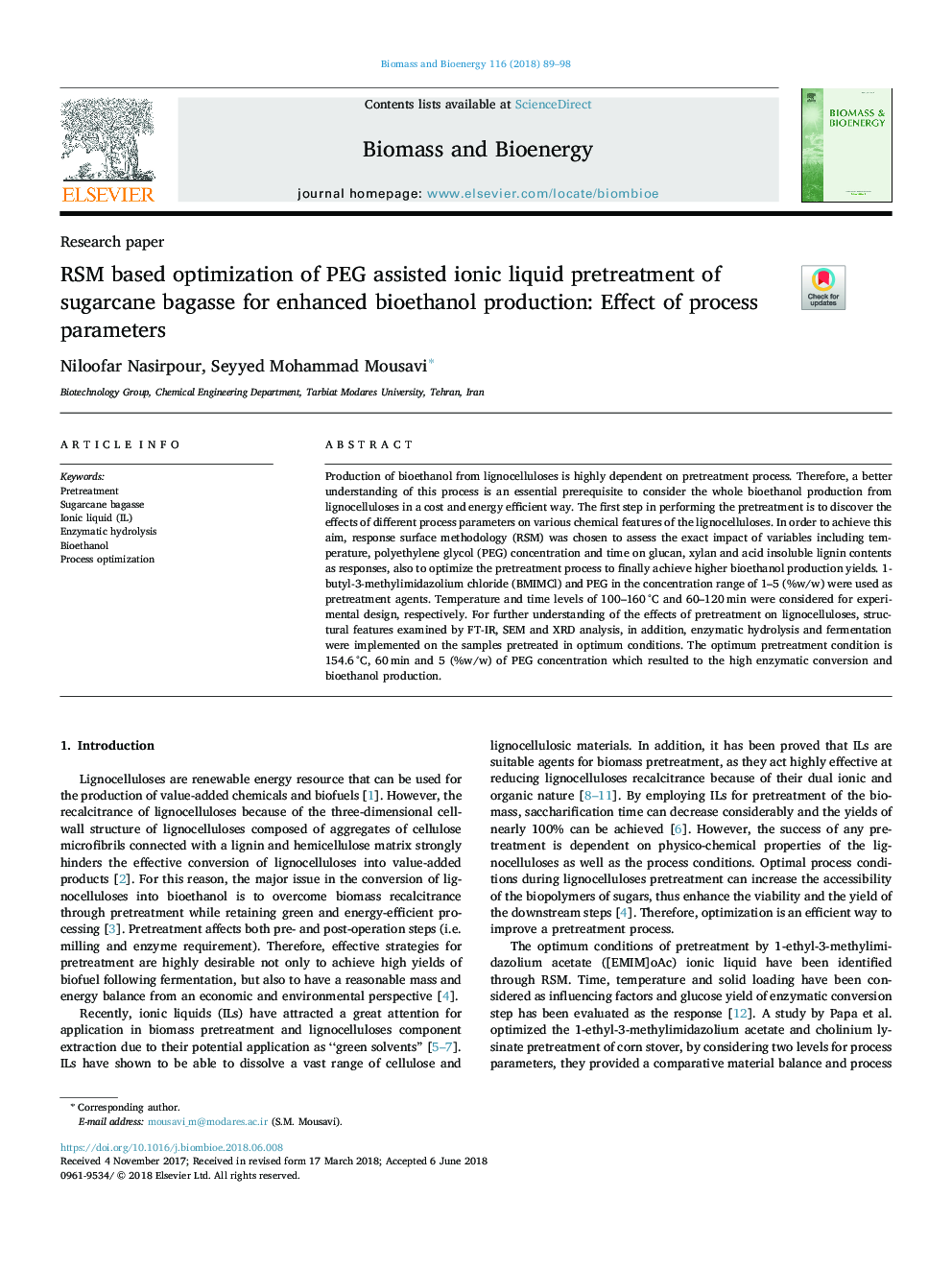| Article ID | Journal | Published Year | Pages | File Type |
|---|---|---|---|---|
| 7062822 | Biomass and Bioenergy | 2018 | 10 Pages |
Abstract
Production of bioethanol from lignocelluloses is highly dependent on pretreatment process. Therefore, a better understanding of this process is an essential prerequisite to consider the whole bioethanol production from lignocelluloses in a cost and energy efficient way. The first step in performing the pretreatment is to discover the effects of different process parameters on various chemical features of the lignocelluloses. In order to achieve this aim, response surface methodology (RSM) was chosen to assess the exact impact of variables including temperature, polyethylene glycol (PEG) concentration and time on glucan, xylan and acid insoluble lignin contents as responses, also to optimize the pretreatment process to finally achieve higher bioethanol production yields. 1-butyl-3-methylimidazolium chloride (BMIMCl) and PEG in the concentration range of 1-5 (%w/w) were used as pretreatment agents. Temperature and time levels of 100-160â¯Â°C and 60-120â¯min were considered for experimental design, respectively. For further understanding of the effects of pretreatment on lignocelluloses, structural features examined by FT-IR, SEM and XRD analysis, in addition, enzymatic hydrolysis and fermentation were implemented on the samples pretreated in optimum conditions. The optimum pretreatment condition is 154.6â¯Â°C, 60â¯min and 5 (%w/w) of PEG concentration which resulted to the high enzymatic conversion and bioethanol production.
Keywords
Related Topics
Physical Sciences and Engineering
Chemical Engineering
Process Chemistry and Technology
Authors
Niloofar Nasirpour, Seyyed Mohammad Mousavi,
